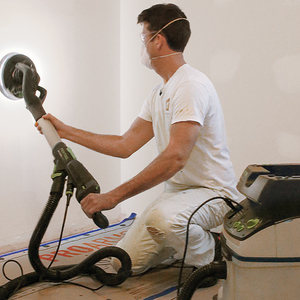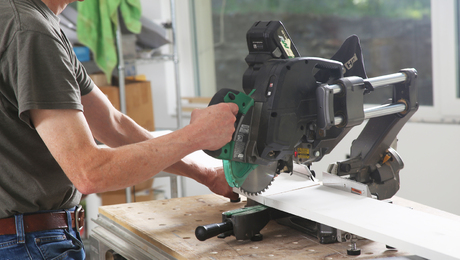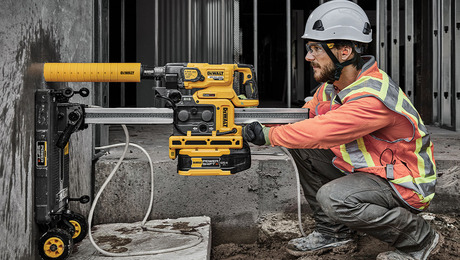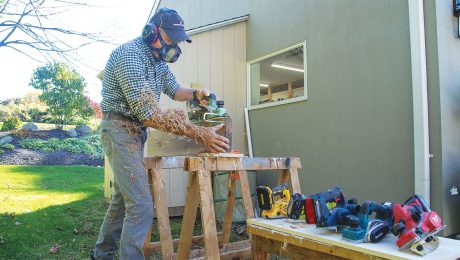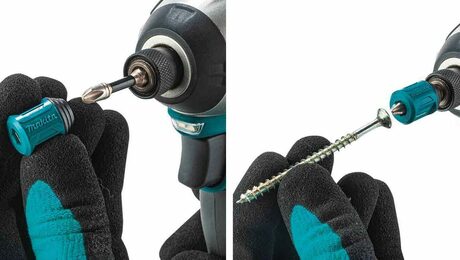Tool Test: Portable Thickness Planers
The best tools offer precision board-surfacing without sacrificing convenience and durability.
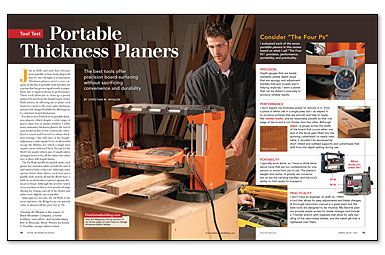
Synopsis: Not too long ago, a thickness planer was a tool strictly available for shop use. Now, however, manufacturers have made the planer something that can be brought to the job site. For this tool review, Montana builder Christian M. Whalen tested seven portable thickness planers, evaluating them on “the four P’s”: precision, performance, portability, and practicality. Among the seven, Whalen rated a DeWalt model as best overall and a Ridgid model as best value. This article includes a sidebar on counteracting snipe with an inexpensive infeed/outfeed table.
Magazine extra: Download a drawing of a low-cost shopmade planer table that prevents snipe.
Just as drills and saws have become more portable, so have many shop tools that we once thought of as stationary. Thickness planers aren’t a new category in this list of portable tools, but they are a group that has grown significantly in popularity due to improvements in performance. These tools allow me to clean up a poorly surfaced board from the lumberyard, ensure flush joinery by allowing me to plane each board in a stack to the exact same thickness, and provide design flexibility by allowing me to customize board thicknesses.
For this review, I tested seven portable thickness planers, which despite a wide range of prices, share lots of similar features. Unlike many stationary thickness planers, the bed of each model in this review is fixed; the cutter head is raised and lowered to adjust thickness settings. One full turn of the height adjustment crank equals 1⁄16 in. on all models except the Makita, for which a single turn equals a more awkward 5⁄64 in. Except for the Steel City model, which uses 26 small cutters arranged in six rows, all the others use either two or three full-length blades.
The DeWalt and Ryobi models aside, each planer has extension tables on both the infeed and outfeed sides of the tool. Although some operate better than others, each tool uses a paddle-style switch; all but the Ryobi have a built-in circuit breaker to protect against electrical overload. Although the severity varied, every machine in this review produced snipe during my testing, and all of the blades and tables were slightly out of parallel.
Although my favorite, the DeWalt, is the most expensive, the Ridgid is an exceptional value at almost half the price.
Precision
Depth gauges that are barely readable, preset depth stops that are spongy, and adjustment handles that spin loosely aren’t helping anybody. I want a planer that can be dialed in precisely to produce reliable results.
Performance
I don’t expect my thickness planer to remove 1⁄8 in. from a piece of white oak in a single pass, but I do expect it to produce surfaces that are smooth and free of ripple like chatter marks, and be reasonably parallel so that one edge of the board is not thicker than the other. Although snipe — a gouge across the width of the board that occurs when one end of the stock gets lifted into the spinning cutter head — is nearly inevitable, it shouldn’t be worsened by short infeed and outfeed supports and cutter heads that drift from the depth setting during use.
Portability
I typically work alone, so I have to think twice about tools that are too cumbersome for one person to move from job to job. The planer’s weight and center of gravity are concerns, but so are the carrying handles, and the tool’s ability to fold neatly for transport.
For more photos and details, click the View PDF button below:




